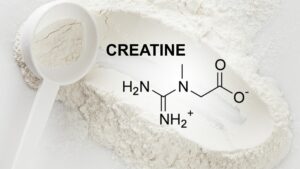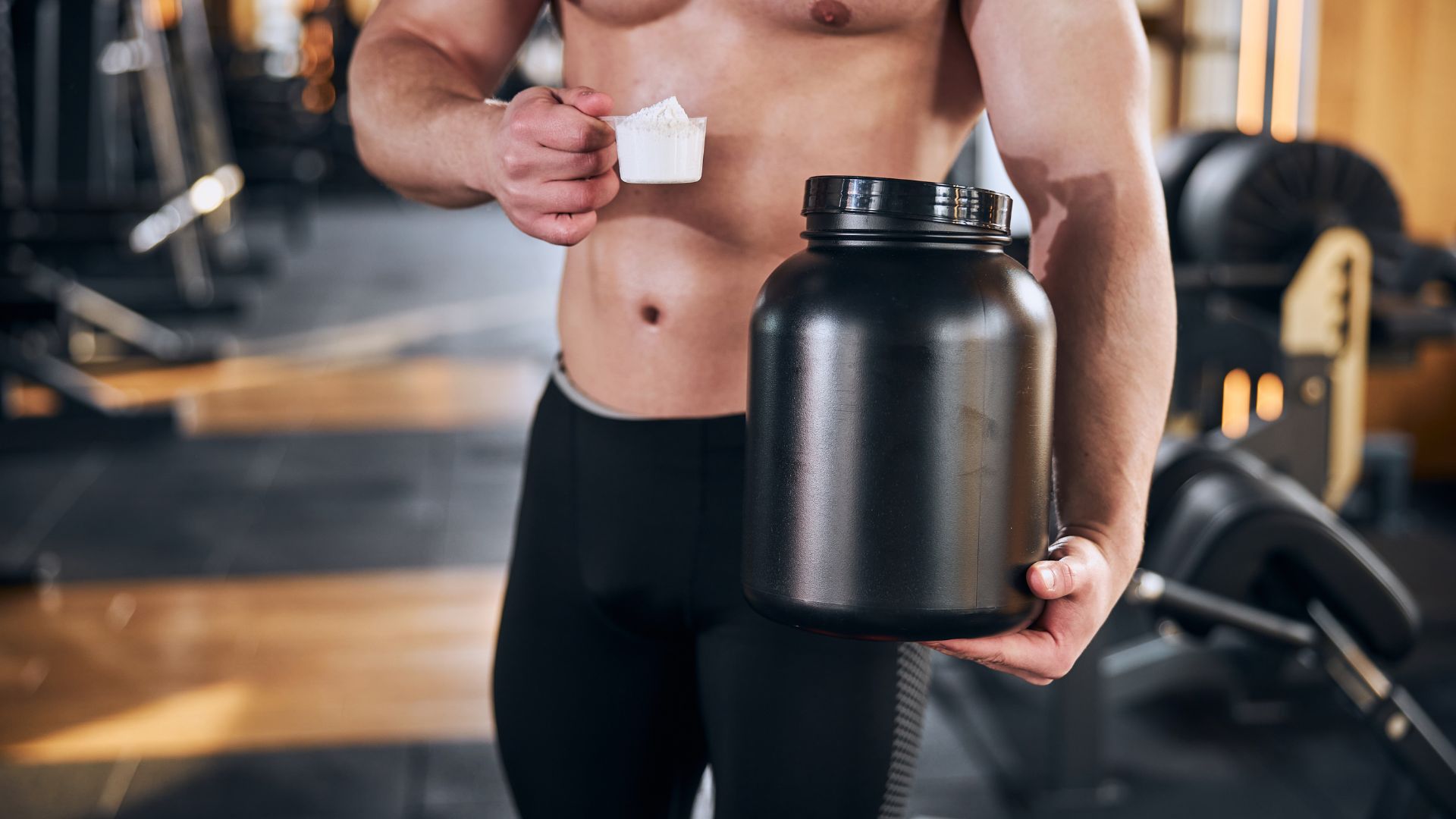Hey there, fitness enthusiasts! Have you ever wondered if you should be reaching for that tub of creatine before hitting the squat rack? We’re about to dive into the world of creatine supplementation and its potential impact on your squatting sessions.
Whether you’re a seasoned lifter or just getting started on your fitness journey, understanding when and how to use creatine can make a significant difference in your performance.
So, grab a seat and get ready to uncover the secrets of timing your creatine intake for those killer squats!
Understanding whether or not to take any Creatine before squatting.
Taking creatine before squatting is a common practice among many athletes and weightlifters.
Creatine is a naturally occurring compound found in small amounts in certain foods and is also produced by the body.
It is often used as a dietary supplement to enhance athletic performance and improve muscle strength and power.
The decision to take creatine before squatting depends on various factors, including your personal goals, tolerance to creatine, and individual preferences. Here are some points to consider:
Creatine Benefits: Creatine supplementation has been shown to increase muscle phosphocreatine levels, which can provide additional energy during high-intensity, short-duration activities like heavy squats.
This may help you perform better and potentially lift more weight or do more repetitions.
Timing: Some people prefer to take creatine before their workout to ensure it’s readily available for muscle energy during their training session.
Others take it at a different time of day, such as post-workout or with a meal. The timing can depend on your routine and when you feel it works best for you.
Individual Response: People’s responses to creatine can vary. Some individuals may experience benefits from taking creatine before their workout, while others may not notice a significant difference.
It’s essential to listen to your body and assess how creatine affects your performance.
Hydration: Creatine can draw water into muscle cells, potentially leading to increased hydration needs.
Ensure that you stay adequately hydrated when using creatine to avoid any potential side effects like cramping.
Creatine Loading: Some people choose to “load” creatine by taking a higher dose for a few days to saturate their muscles with creatine quickly.
After the loading phase, they switch to a maintenance dose. If you choose to load, you might take creatine before and after workouts during the loading phase.
Consult a Professional: If you have any specific concerns or medical conditions, it’s advisable to consult with a healthcare professional or a sports nutritionist before starting creatine supplementation.
In other words, taking creatine before squatting can be beneficial for many individuals, as it may enhance performance during high-intensity exercises.
However, individual responses vary, so it’s essential to monitor your own experience and adjust your timing and dosage accordingly.
Always prioritize proper hydration and consider consulting with a healthcare professional or nutritionist for personalized guidance based on your goals and needs.

Further Explanations.
Let’s dive deeper and explain further the point mentioned here.
First, let’s delve into more detail about the benefits of creatine and its timing in supplementation:
Creatine Benefits.
Creatine is a naturally occurring compound primarily stored in your muscles as phosphocreatine.
During high-intensity, short-duration activities like heavy squats, your muscles require a rapid source of energy. Creatine plays a crucial role in this process. Here’s how it benefits you:
Increased Phosphocreatine Levels:
When you take creatine as a supplement, it gets converted into phosphocreatine in your muscles.
Phosphocreatine acts as a rapid energy reserve that can be used to regenerate adenosine triphosphate (ATP), which is the primary energy currency of your cells.
Enhanced Energy Production:
With increased phosphocreatine levels, your muscles can generate ATP more quickly. This allows for a surge of readily available energy during short bursts of intense activity, such as heavy squats.
Improved Performance:
The extra energy provided by creatine can lead to improved performance during high-intensity exercises.
You may find that you can lift more weight, do more repetitions, or sustain your efforts for longer periods without feeling fatigued.
Timing of Creatine Supplementation.
The timing of creatine supplementation can influence how effectively it works for you. Here are some common approaches to timing creatine intake:
Pre-Workout:
Many athletes and fitness enthusiasts choose to take creatine before their workout. This is because they want to ensure that the creatine is readily available in their muscles when they need it most during the training session.
By providing a boost in energy production, it can potentially enhance their performance during exercises like squats.
Post-Workout:
Some individuals prefer to take creatine immediately after their workout. The rationale behind this is that, after exercise, muscle cells are more receptive to nutrient uptake, including creatine.
By consuming it post-workout along with carbohydrates and protein, you may optimize its absorption into muscle tissue.
With a Meal:
Others simply incorporate creatine into one of their daily meals. This can be convenient and can still provide benefits, although the timing might not be as precise as pre- or post-workout supplementation.
Loading Phase vs. Maintenance Phase:
Some people choose to start with a loading phase, where they take a higher dose of creatine for a few days to saturate their muscles quickly.
After this loading phase, they switch to a lower maintenance dose for ongoing supplementation.
It’s important to note that the timing of creatine supplementation can vary based on individual preferences and routines.
There is no one-size-fits-all approach, and what works best for you may depend on factors like your workout schedule, dietary habits, and how your body responds to creatine.
Ultimately, consistent creatine supplementation, regardless of timing, can lead to increased phosphocreatine stores in your muscles over time, which can contribute to improved performance in high-intensity activities like squatting. Experimentation and personal preference can help you determine the timing that suits your goals and fits into your lifestyle.
let’s explore the individual response to creatine and the importance of hydration in more detail:
Individual Response to Creatine.
People’s responses to creatine supplementation can vary widely.
This variability can be influenced by several factors, including genetics, diet, training regimen, and baseline levels of creatine in your muscles. Here’s a deeper look:
Genetics:
Some individuals naturally have higher baseline levels of creatine in their muscles, which may limit the additional benefits they experience from supplementation.
Conversely, those with lower baseline levels may notice more significant improvements in performance.

Diet:
Your dietary habits, including the amount of creatine-rich foods you consume, can impact your response to supplementation.
Individuals who consume more red meat and fish, which are natural sources of creatine, may have higher baseline levels.
Training Regimen:
The type and intensity of your workouts can also play a role. Creatine tends to benefit activities involving short bursts of explosive power, such as weightlifting and sprinting, more than endurance activities.
Baseline Creatine Levels:
Your starting levels of creatine in muscle tissue can affect how quickly you notice improvements. If your baseline levels are low, you may experience more noticeable benefits sooner.
Given this variability, it’s crucial to listen to your body and pay attention to how creatine affects your performance over time.
Some individuals may see immediate gains, while others might require a few weeks of consistent supplementation to notice a difference.
Hydration and Creatine:
Creatine has the potential to draw water into muscle cells, a phenomenon known as osmotic swelling.
This is part of the reason why some individuals experience temporary weight gain when they first start taking creatine. Here’s why hydration is essential:
Increased Fluid Requirement:
When creatine draws water into muscle cells, it can lead to increased fluid needs in your body.
Failing to stay adequately hydrated can result in dehydration, which can cause various issues, including muscle cramping and decreased performance.
Preventing Cramping:
Dehydration can increase the risk of muscle cramps during exercise. Staying hydrated helps minimize this risk, especially if you’re engaged in intense physical activities like squatting.
To ensure that you stay hydrated while using creatine, consider the following tips:
Drink Plenty of Water:
Aim to consume enough water throughout the day, especially on workout days.
Monitor Fluid Loss:
If you engage in intense exercise, monitor your sweat rate and replace lost fluids accordingly. Electrolyte-containing beverages can also help maintain proper electrolyte balance.
Individual Needs:
The amount of water you need can vary based on factors like climate, activity level, and body size. Listen to your body’s cues for thirst and adjust your fluid intake accordingly.
In summary, while creatine supplementation can have significant benefits for many individuals, individual responses may vary.
It’s crucial to be patient and monitor how it affects your performance over time. Additionally, staying adequately hydrated is essential to prevent potential side effects like cramping and to support overall well-being during creatine supplementation.
Let’s discuss creatine loading and the importance of consulting a healthcare professional or sports nutritionist:
Creatine Loading.
Creatine loading is a strategy where individuals take a higher dose of creatine for a short period, typically around 20 grams per day, spread out in multiple doses, for 5-7 days.
The goal of loading is to quickly saturate the muscles with creatine, allowing you to potentially experience the benefits sooner.
After the loading phase, most people switch to a lower daily maintenance dose, typically around 3-5 grams per day.
Benefits of Loading:
Loading can rapidly increase the amount of creatine stored in your muscles, ensuring that you have a substantial reserve available for high-intensity activities.
This may lead to quicker improvements in performance during activities like squatting.
Maintenance Phase:
The maintenance phase is important because it sustains the elevated levels of creatine in your muscles without the need for the high loading doses.
A lower daily dose is sufficient to maintain these levels and continue experiencing the benefits.
Loading Timing:
If you choose to load, it’s common to divide the daily loading dose into 4-5 smaller servings throughout the day, including both before and after workouts.
This helps ensure that creatine is readily available when your muscles need it most during training.
It’s worth noting that not everyone needs to or chooses to load creatine. Some individuals may opt for a steady, lower daily dose from the beginning without a loading phase.
The choice of whether to load or not often comes down to personal preference and how quickly you want to experience the benefits.
Consult a Professional.
Before starting any supplementation regimen, especially if you have specific concerns or medical conditions, it’s advisable to consult with a healthcare professional or a sports nutritionist. Here’s why this is important:
Personalized Guidance:
These professionals can provide personalized guidance based on your unique health status, fitness goals, and any underlying medical conditions.
They can help determine the most appropriate creatine supplementation strategy for you.
Safety Considerations:
If you have any medical conditions or are taking medications, it’s essential to ensure that creatine supplementation is safe and won’t interact negatively with your current treatments.
Optimal Dosage:
Consulting with a professional can help you determine the most suitable dosage for your needs, whether you choose to load or start with a maintenance dose.
Monitoring and Adjustments:
Professionals can also monitor your progress and make adjustments to your supplementation plan if needed, ensuring that you are getting the desired benefits without any adverse effects.
In conclusion, creatine loading can be an effective strategy to quickly saturate your muscles with creatine and potentially experience performance benefits sooner.
However, it’s essential to consult with a healthcare professional or sports nutritionist, especially if you have specific concerns or medical conditions, to receive personalized guidance on creatine supplementation and ensure it aligns with your overall health and fitness goals.
A concise tabular on this topic here.
Here’s a concise tabular comparison of the advantages and disadvantages of taking creatine before squatting:
| Aspect | Taking Creatine Before Squatting | Not Taking Creatine Before Squatting |
|---|---|---|
| Performance Benefits | Potential for increased energy and strength during squats due to elevated phosphocreatine levels. | May not experience the immediate energy boost that creatine can provide. |
| Rapid Energy Source | Creatine can be readily available for muscle energy, particularly during high-intensity sets. | May rely solely on your body’s natural energy sources during squats. |
| Personal Response | Effectiveness can vary among individuals. Some may notice significant benefits; others may not. | No reliance on creatine for performance, reducing variability in response. |
| Loading Phase Consideration | Some individuals choose to load creatine with higher doses before workouts for quicker saturation. | Not applicable if you prefer not to load creatine or start with a maintenance dose. |
| Hydration Awareness | Important to stay well-hydrated due to creatine’s potential to draw water into muscle cells. | Adequate hydration remains crucial to support overall performance and prevent cramping. |
| Professional Guidance | Consultation with a healthcare professional or sports nutritionist is advisable for personalized guidance. | Professional guidance can still be valuable for overall fitness and nutrition planning. |
Ultimately, the decision of whether to take creatine before squatting depends on your individual goals, preferences, and how your body responds to supplementation.
It’s important to make an informed choice that aligns with your fitness regimen and consult with a professional if you have specific concerns or medical conditions.
Conclusion.
In conclusion, whether or not to take creatine before squatting is a choice that depends on individual preferences and goals.
Taking creatine before squats can potentially provide a boost in energy and strength due to increased phosphocreatine levels, but responses vary.
It’s essential to stay adequately hydrated regardless of your choice.
Consulting with a healthcare professional or sports nutritionist is advisable for personalized guidance, ensuring that creatine supplementation aligns with your specific needs and circumstances. Ultimately, the decision should be based on what works best for you and your fitness routine.

Hey there, it’s Mike Rrsq, the Editor-in-Chief over at Jsquat.com, and I’m absolutely obsessed with all things squat fitness! I’ve been lucky enough to get some serious recognition for my work in this field. With a solid background in the fitness and wellness industry, I’ve been there right from the get-go, helping shape this website into what it is today.
You see, I’m not just the boss around here; I’m also a passionate contributor. I love sharing my insights through my articles, and trust me, they’re not your run-of-the-mill stuff. Each piece I write is a labor of love, filled with my expertise and real-world experience in the fitness universe. So, if you’re into fitness and looking for some inspiration, you’re in the right place!

